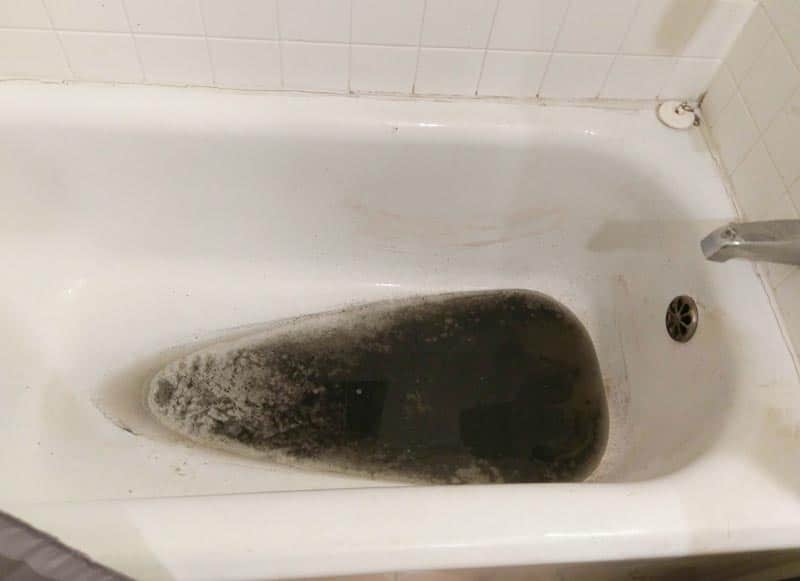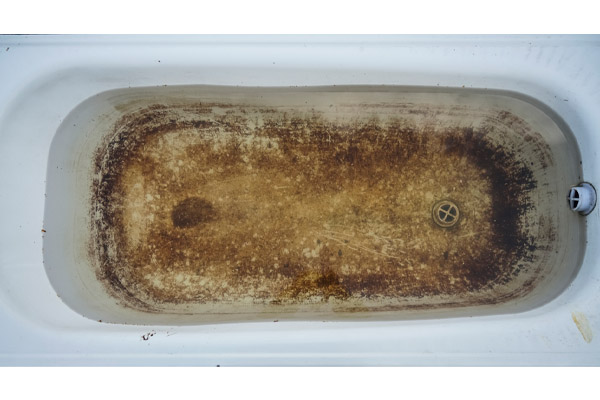Scrutinizing the Phenomenon of Effluent Rising Through the Bathtub
Scrutinizing the Phenomenon of Effluent Rising Through the Bathtub
Blog Article
This post below involving What To Do If Sewage Starts Backing Up Into the Shower is relatively interesting. Read it for yourself and figure out what you think of it.

Sewer backup in the bath tub can be a traumatic and unsanitary trouble for any homeowner. Not only is it troublesome, yet it additionally poses serious health risks and shows underlying problems with the plumbing system. Understanding why sewer is showing up via the bath tub is vital for taking appropriate action to attend to the trouble efficiently.
Intro to the Issue
Typical Reasons for Sewage Backup
Blockages in the Sewer Line
Among the most common sources of sewage back-up is an obstruction in the drain line. This can take place as a result of the buildup of debris, oil, or international items in the pipes, protecting against correct flow and triggering sewer to support right into your tub.
Tree Root Intrusion
Tree origins seeking moisture and nutrients can infiltrate drain lines with little splits or joints. With time, these roots can grow and increase, triggering substantial damage to the pipelines and resulting in sewer back-up issues.
Understanding the Trouble
When sewage draws back up into the bath tub, it's a clear indicator of an issue with the drain system. The wastewater that ought to be streaming away from your home is instead discovering its back into your home, which can bring about considerable damage and carcinogen.
Possible Causes
A number of variables can contribute to sewage backup in the tub. From clogs in the sewer line to problems with the plumbing infrastructure, recognizing the origin is crucial for finding a solution.
Aging Framework
Older homes might have outdated plumbing systems that are a lot more prone to rust, fractures, and wear and tear. As pipes age, they become a lot more susceptible to leakages and obstructions, increasing the possibility of sewage back-up events.
Heavy Rainfall or Flooding
Throughout periods of heavy rainfall or flooding, the sewer system may become overloaded with excess water, triggering backups and overflows. This can cause sewage supporting right into bathtubs and other fixtures inside the home.
Indicators of Sewage Back-up
Foul Odors
Undesirable odors originating from drains pipes or components, especially in the restroom, may show sewage back-up problems. These odors are typically solid and persistent, indicating an issue that needs prompt interest.
Slow Draining Fixtures
Tubs, sinks, and bathrooms that drain gradually or otherwise in any way could be experiencing sewage back-up. If several components are influenced all at once, it's likely that the problem stems from an usual factor, such as the main sewer line.
Gurgling Sounds
Odd gurgling or bubbling sounds coming from drains pipes when water is running in other places in the house are a sign of air trapped in the plumbing system. This air buildup can result from sewer backup and must be examined promptly.
Wellness Risks Related To Sewer Back-up
Contamination of Water Supply
Sewage backup can pollute the supply of water in your house, posing a serious health danger to you and your household. Exposure to infected water can bring about stomach issues, skin infections, and various other illnesses.
Mold and mildew Growth
Dampness from sewer back-up can produce ideal conditions for mold growth in your house. Mold and mildew spores can intensify respiratory system problems and create allergies in sensitive people, making prompt cleaning important.
Spread of Illness
Sewage has damaging microorganisms, infections, and parasites that can create a variety of diseases, including hepatitis, cholera, and gastroenteritis. Entering contact with sewage or contaminated surface areas puts you in jeopardy of infection.
Cleaning Up After Sewage Back-up
Sanitation Procedures
Completely decontaminate and sterilize influenced areas after sewer back-up to eliminate dangerous microorganisms and avoid mold and mildew development. Usage ideal cleansing items and protective equipment to ensure safe and effective clean-up.
Remediation of Influenced Locations
Fix any damage to flooring, wall surfaces, or components triggered by sewage backup. Relying on the degree of the damages, you may require to change carpeting, drywall, or various other materials to recover your home to its pre-loss condition.
Immediate Actions to Take
Shutting Off Water Supply
In case of sewage back-up, it's necessary to shut off the water supply to avoid additional contamination and damage. Find the major water shutoff valve in your house and shut it off till the concern can be fixed.
Speaking To a Professional Plumber
Handling sewage back-up is not a do it yourself job. Call a certified plumber with experience in dealing with sewage-related concerns to evaluate the scenario and carry out essential repair services or cleanings.
Preventing Contact with Contaminated Water
Until the sewer backup is fixed, prevent contact with infected water to stop the spread of germs and virus. Use safety gear if you have to remain in the affected location and wash your hands thoroughly later.
Preventive Measures
Routine Upkeep of Drain Lines
Set up regular evaluations and maintenance of your sewage system lines to determine and attend to possible issues before they rise right into major troubles. This can include cleaning out debris, checking for tree root intrusion, and repairing any kind of broken pipes.
Mounting Backwater Valves
Think about setting up backwater valves in your plumbing system to avoid sewage from receding right into your home throughout durations of heavy rainfall or flooding. These shutoffs immediately close when water starts backing up, shielding your residential or commercial property from contamination.
Correct Disposal of Home Waste
Prevent flushing anything aside from toilet tissue and human waste down the toilet to prevent clogs and clogs in the sewage system line. Dispose of grease, oil, and other family chemicals effectively to decrease the risk of plumbing problems.
Why Is Water Backing Up in My Bathtub When I Flush My Toilet?
What to do about a sewer line clog
First, don’t bother with plunging. No amount of plunging will dislodge the clog in a sewer line. The clog is too far away. Plungers are for clogs in the toilet itself, not the sewer line. Plus, the most likely causes of a sewer clog are:
Tree roots Flushed toys or feminine products Grease buildup Those items don’t move easily. And in the case of tree roots, the roots need to be cut out of the pipe and the pipe will need to be repaired.
You’ll need a closet auger. A closet auger is a type of plumber’s snake with a protective cover to keep from scratching the delicate porcelain toilet. If the clog is further down, you may need to remove the toilet or use one of your cleanouts to get to the clog.
We also recommend doing a video inspection of the drain to ensure that the cause of the clog has been completely removed. Otherwise, you could have the same problem again in a few days or weeks.
https://mspplumbingheatingair.com/blog/why-is-water-backing-up-in-my-bathtub-when-i-flush-my-toilet

Hopefully you liked our section on Water Coming up Bathtub Drain. Many thanks for taking the time to read our post. If you please take the opportunity to promote this write-up if you enjoyed it. Thanks so much for taking the time to read it.
Article
Report this page